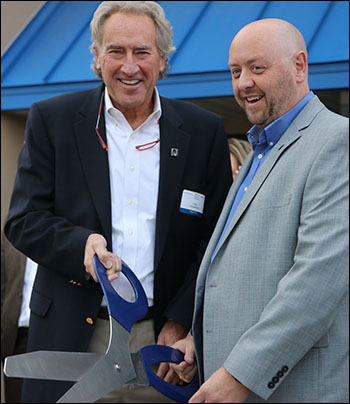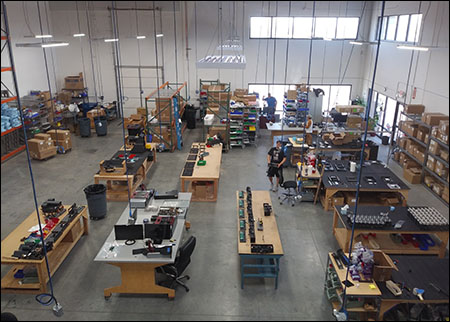
Many of our customers don’t even know that Digital Check is in the microfilm business – but if you were one of those people, you know now! In fact, the microfilm side of our company is growing faster than ever. On Tuesday, November 12, we cut the ribbon on a new office and manufacturing facility near Boise, Idaho, that will be home to both our nextScan and ST Imaging divisions for years to come.
Our new building, located in Meridian, Idaho (less than a mile outside Boise), is more than double the size of our previous location. Besides housing the administrative headquarters for the two divisions, it contains several expanded work areas for assembly, shipping and receiving, quality testing, support, repairs, and engineering.
For those not familiar with this part of our company, Digital Check actually got its start in the world of microfilm, all the way back in 1959. Back then, we were called Microseal, and we made “aperture cards” and plastic microfilm jackets for protecting and organizing large collections of film and fiche.
Today, our ST Imaging division specializes in digital microfilm readers — think of the machines you used to see at your local library, only now with digital cameras that can output the resulting images as computer files. NextScan deals with the other side of the coin: The big, high-speed production machines that convert microfilm and microfiche to digital format permanently. If you’re looking to read microfilm, ST Imaging is your choice; if you need to back up your entire archive, it’s nextScan.
At this facility, we assemble ST Imaging’s ViewScan 4 line of microfilm and fiche readers, as well as nextScan’s Eclipse, FlexScan, and new FlexView bulk conversion scanners. We also write and test all the image-capture and auditing software that translates what’s on film to what you see on a computer screen. Besides more than doubling the plant’s capacity, the expansion reaffirms Digital Check’s commitment to microfilm, and to building the best and most advanced optical imaging equipment in the world.

The question many of you might be asking is: Why now? Who uses microfilm anymore – isn’t it a dying business?
And the answer is, you would be amazed at just how much microfilm and microfiche exists in the world. They’re not making much new film these days, but it’s widely believed that there are tens or even hundreds of billions of rolls of the stuff worldwide, containing trillions of documents. In most cases, these haven’t been converted to digital (more on that below), so there are no other copies of these documents anywhere else – the microfilm or fiche copy is the only one that exists. For example, most official records in the U.S. prior to about the late 1990s – think birth, death, marriage, divorce records, and so on – are on microfilm and have never been digitized.
So, despite the fact that you can legitimately call microfilm and microfiche an antiquated way of storing information, the demand for devices that can read them is actually pretty high – and the pressure to preserve them digitally is greater than ever.
Why is it that so much microfilm still hasn’t been digitized yet? It’s actually pretty simple: Microfilm doesn’t digitize itself. And people drastically underestimate the amount of information it contains.
Think of it this way: If you have a even a very modest-sized collection of, say, 100 microfilm rolls, each one of them might contain a thousand or more pages of information. If you try to convert them manually, that’s 100,000 images you have to deal with. Even if you can scan, clean up, double-check, save, label, and organize each one in about 30 seconds – we’ll see you in about six months!
That’s why it takes a specialized device and specialized software to do a microfilm conversion project; and it’s also why so much film and fiche is still sitting around in its original physical form after all these years.
Unfortunately, that means many of the world’s physical archives are locked in a race against time, as the degenerative process called “Vinegar Syndrome” threatens to degrade much of the older microfilm and microfiche that’s still around. If you happen to have a stash of film still sitting around in your archives, it wouldn’t hurt to check on it – and there’s no better time to start converting it than now!





